

Ludwig Schupmann and
some early Medial Telescopes
By Jim Daley, Springfield Telescope Makers
There can hardly be a professional optical designer or amateur telescope maker who, by now, is not familiar with the principals of the Schupmann telescope. Amazingly, little is known of the inventor himself. Many inquiries for information about his life have been directed to our Stellafane Website. In this little article, I will relate a fragmented story based on my meager records of the man himself.
German born in 1851, Ludwig showed, even in his early youth, a strong interest in astronomical goings-on and in particular the technical side of the instrumentation. Although his piercing analytical mind was evident to all those around him, his overly modest character probably reduced the impact of many of his future achievements. He simply was not one to shout from the highest hill his truly great new ideas.
After earning his degree at the Technical University of Aachen (Rhineland) he worked in the field of architectural design specializing in public buildings. His achievements in this field resulted in many top awards at design competitions. At age 36 he was appointed a professorship at the same university that his degree was earned.
It is not clear when Schupmann hit upon the optical principal for which he is famous. His struggle to free the refractor of its devastating color defects and limits on aperture, due to flexure, led him to investigate the dialyt design. This form of refractor offered the hope of correcting a large single element objective with a complex lens positioned about half way down the tube. Failing a satisfactory solution, he abandoned the dialyt idea. Schupmann subsequently hit upon his unique invention which offered a solution for color correction unheard of at the time and 1899 he published his work titled Die Medial Fernrohre. This book describes various solutions for nearly complete longitudinal color correction for apertures up to 60-inches. It was in this year that Ludwig was granted a US patent for his telescope designs. He applied for the patent on July 30, 1897 while living in Aix-La-Chapelle (Aachen), Germany. The patent title is Optical Correcting Device For Refracting-Telescopes No.620,978, dated March 14,1899.Although a few small test models were made the first medial of note was a slightly inferior 333mm aperture version by Rienfelder & Hertel in 1900. This instrument was later destroyed in bombing raids.
Getting back to his life, among Ludwigs friends was a very special person: Philip Fauth. Schupmann provided Fauth with a design for a greatly improved version of the medial and, in this connection, I urge the reader to see Sky & Telescope , November, 1959 pp.21-24 Philip Fauth and the Moonby Hermann Fauth. His selenographic work remains, even today, an amazing achievment. The 385mm Fauth medial, built by Merz in 1911, was of exceptional quality and a smaller 325mm copy also by Merz in 1917, after extensive testing, was also pronounced perfect by astronomers of the Konigstuhl-Obervatory (Heidelberg) and is still in use (see Sky & Telescope, March, 1983 pp.273-278 Gleanings for ATMs). Anton Kutter, inventor and developer of the Schiefspiegler, and who regarded Schupmann as his mentor, used the Fauth-Medial in the years 1932 until Fauths death in 1941 (this instrument, see images below, was ravaged in the after war difficulties). Schupmann died in 1920 thus lived to see the realization of this specific design. The design was published 10 months after his death without the benefit of proofreading. This article in Eitschrift fur Jnstrumentenkund XL1 Jahrgang, pp. 212-219 was filled with confusing typographical errors. This, combined with Schupmanns own mathematical symbols, did little to advance the medial form.
It is from my old (1971) private communications with the late Anton Kutter that much of the information here was gleaned. His enthusiasm for the renewed interest in the Schupmann telescope in the US was very evident in his letters. Kutter constructed three medials, two of which were exact models of the Fauth instrument. The first, finished in 1936 was of 122 mm aperture and the second,1938, of 270mm. This larger telescope was destroyed in the bombing-out of Kutters Munich property. In 1946 Kutter went on to make a third, all spherical, 150mm instrument computed using Schupmanns unfashionable and nonconformist mathematical style. This last instrument was the first to use a single element corrector thus setting the course for all future interpretations.
It is interesting to note that Schupmanns dream was to develop truly huge refractors capable of competing with reflectors of the era and, yet, in the end his invention, instead, provides the amateur with a design perfectly suited for planetary observation, almost always best accomplished with instruments of comparatively tiny, 200-350mm, apertures.
Additional information: Ludwig Schupmann was born in the town of Geseke January 23, 1851 and died in the same town on February 10, 1920 and is buried there.
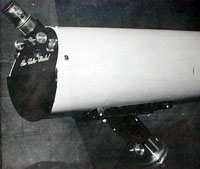
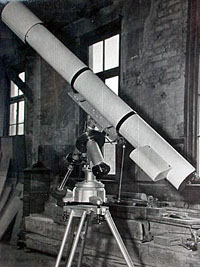
Anton Kutter's 150 mm f-11.3 "all spherical" medial of 1946 (right image). This view shows Kutter's novel idea of employing a skewed objective beam to make better use of the tube diameter to enclose the corrector path. The primary beam is directed to the corrector, after passing through a field lens, by the use of a plain mirror.
The engraved plate has the inscription "Else Kutter Medial" named after his wife or daughter perhaps (left image).
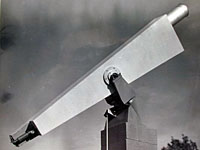
The 150mm f:15 Schupmann pictured here was designed by Rev. Edwin Olson and completed by him in 1965. It represents the first truly successful interpretation of the Schupmann principle in the United States. The instrument is unusual in that it is the first to employ a full size corrector (the same diameter as the objective) and is the first Schupmann to utilize a field mirror and is thus of great historical significance. This form has many theoretical advantages such as the reduction of the normally insignificant spherochromatism to essentially zero, very small compensating tilts are required, low field curvature and, by itself, corrected for spherical with spherical surfaces leaving only the objective to aspherize. In practice this form of medial is limited to a clear aperture of about 200mm due to thermal effects in the corrector making figuring tricky. The instrument is seen here, in 1966, temporarily mounted on my "Porter Folly" equatorial. No Schupmann to date has outperformed the "Olson Medial".
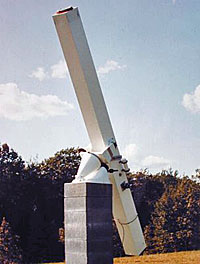
While using Ed Olson's Schupmann pictured above, I constructed this 7.5-inch f:13.3 in-line field lens type medial and, in 1969, after returning Ed's instrument, I mounted it on the "Porter Folly mount in the back yard. You will see that in those days we simply made our scopes absolutely weather proof and left them outside and what wonderful images they produced. Look close for the wire that lead to a 50 watt bulb mounted inside the scope down by the Mangin. This kept away all internal dewing and was disconnected about an hour before viewing. This instrument was inspired, in part, by the late Chester Cook of the Boston Telescope Makers who made, in 1952, a similar 8-inch field lens system. Although my instrument gave great lunar and planetary images it was the desire for high performance in solar prominence work that drove the development of this version. It was used for many years to view prominences using an occulting disk and a simple Kodak #92 gelatin eyepiece filter; so complete was the control of scattered light.
If anyone has a picture of Chester Cook's 8-inch Schupmann please tell the webmaster. I cannot tell you how much it would mean to me and my efforts in a project to chronicle all the Schupmann's from around the world.
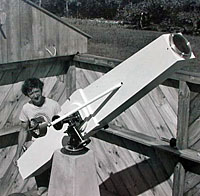
I made this Schupmann in 1984 to test the "all spherical" design. It has an aperture of 6-inches and operates at f/15. The instrument is the world's first "Super Schupmann" and is distinguished from the "Else Kutter Medial" in that the color correction is perfect whereas Kutter's employed a light flint to achieve an all spherical form with a 1/3 diameter corrector. This solution left small color residuals about 1/2 that of the best 3 element apochromat of the time and thus cannot be considered a "Super Schupmann".
Years ago I sold the pictured instrument to the Boston ATMs where it is being readied for planetary work.
Other articles and photos by Jim Daley on the Stellafane web site:
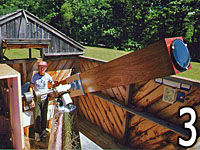
|
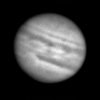
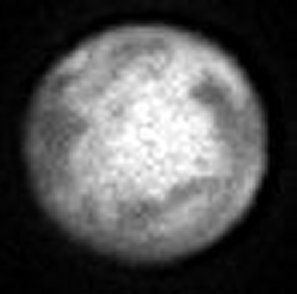
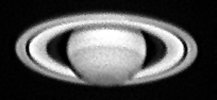
|
Back to the McGregor-Schupmann Page